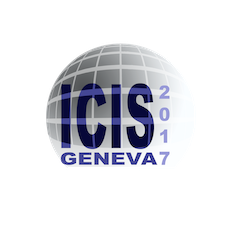Speaker
Description
The Heavy Elements Laser Ionization and Spectroscopy (HELIOS) project at KU Leuven has the goal of performing In-Gas Laser Ionization and Spectroscopy (IGLIS) measurements on the actinide and superheavy (transfermium) elements. These studies will allow to deduce atomic properties, e.g. ionization potentials, electronic transition energies and strengths, isotope shifts, nuclear charge radii, and nuclear properties, nuclear spins and nuclear electromagnetic moments with high precision owing to an improved spectral resolution down to 100 MHz (FWHM) for these elements. In these spectroscopic measurements, step-wise laser ionization of the involved isotopes takes place in the supersonic jet formed by a de Laval nozzle installed at the gas cell exit. The in-gas-jet method allows an increase in resolution of at least an order of magnitude, owing to the low particle density, low temperature and small velocity spread in the supersonic jet, compared to the in-gas-cell laser ionization measurements. Furthermore, the complete set up is developed as a new in-gas jet ion source for the selective production of radioactive ion beams in the heavy element region and around 100Sn. These include isomeric beams making use of the laser ionization mechanism.
A complete characterization of the in-gas-jet method can only be achieved when factors such as frequency stability and power of the lasers as well as the spectral linewidths are minimized, and the timing for data acquisition of multiple systematic measurements can be synchronized. Therefore, a dedicated control system has been developed at KU Leuven. The program enables the stabilization of the laser wavelength, reducing the laser frequency fluctuations from 50 MHz down to 7 MHz. This corresponds to the precision of the wavelength meter used to measure the laser wavelength. This reduction in frequency fluctuations is necessary to be able to accurately perform spectroscopy on peaks with a Full Width at Half Maximum (FWHM) in the order of tens of MHz. Furthermore, the control program synchronizes the full command to several types of data acquisitions e.g. time-of-flight measurements for isotope separation in an Atomic Beam Unit (ABU) and image acquisitions for Planar Laser Induced Fluorescence (PLIF) spectroscopy of the seeded atoms in the supersonic jet. This synchronization and increases the signal-to-noise ratio and enables study of systematic effects by comparing the results of PLIF spectroscopy with those obtained in the ABU.
